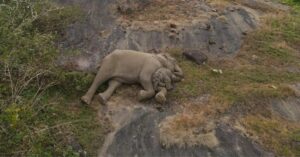From 400 Dogs to Buffaloes & Goats: A Magical Visit To Delhi Woman’s Unique Shelter
Aptly named ‘All Creatures Great And Small’ (AGCS), this facility cares and makes space for every creature, and they are not let out even after they heal because their ability to survive takes a hit after the pampering they receive here.
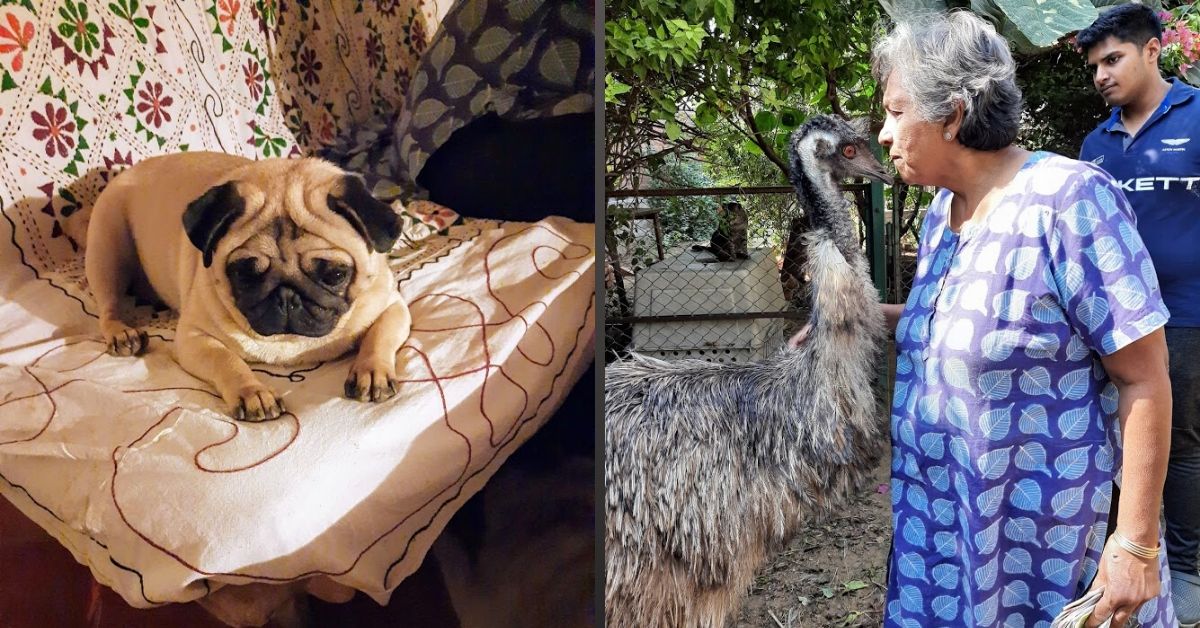
“All animals are equal but some animals are more equal than others.”
-George Orwell
Bhim sits in his taal and languidly flicks his tail to disperse pesky flies as he surveys the world around him. He is, by far, the most privileged buffalo I know. This taal was created solely for him to loll in after he injured his hind leg at All Creatures Great And Small (ACGS).
Bhim’s leg has healed since but he is now a member of the over 700-odd animal family housed here, over 100 of whom are blind, a few mute and deaf.
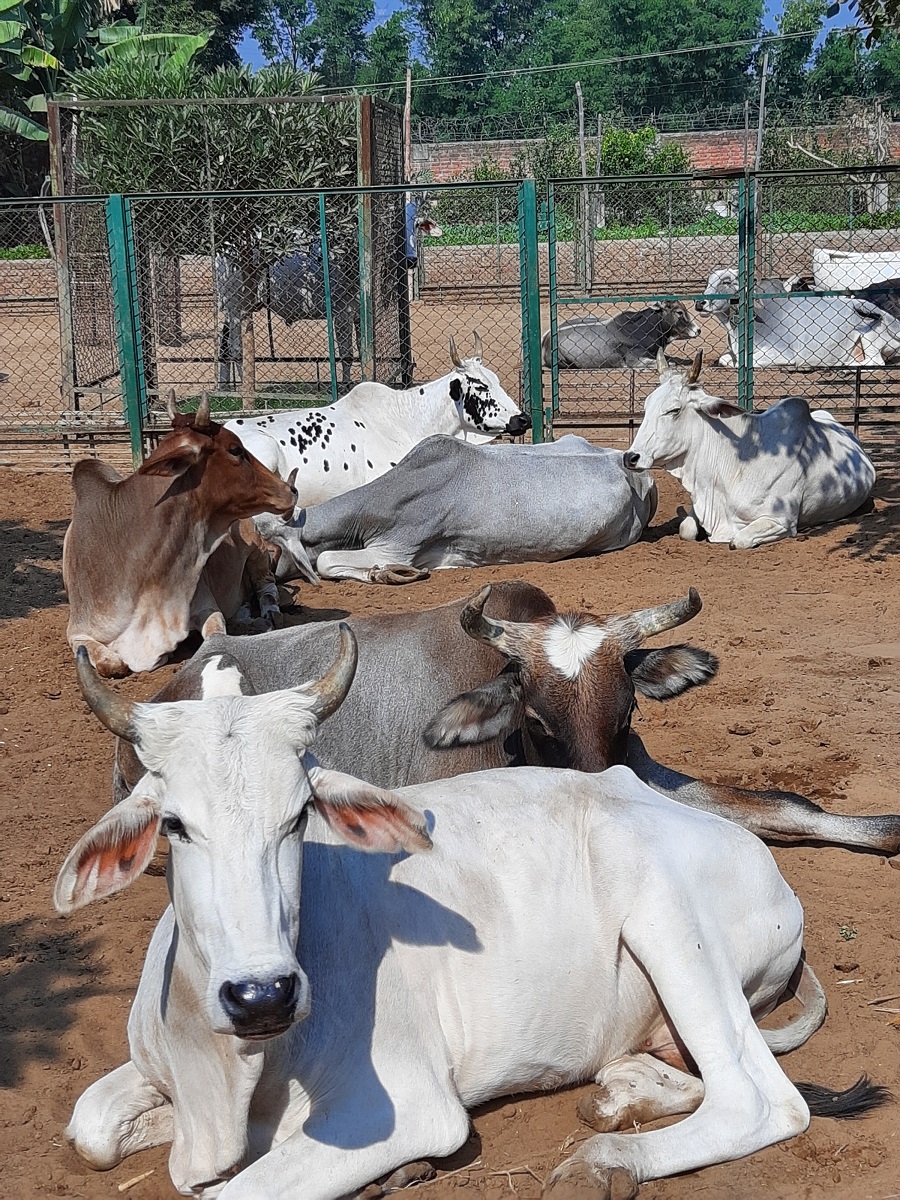
Not far from him, Sita, one of the female buffaloes, sits majestically in the sun, dozing, done with her soaking for the day. Kamli, one of the blind female buffaloes, is walking around restlessly. Two blind calves nearby (there are six at ACGS) are running in circles; something blind calves often tend to do all day, I learn to my utter surprise. If this all-day running around tires them, they don’t let on in any way.
George Orwell’s allegory comes alive before my eyes except that rebellion is far from the thoughts of the inhabitants. In fact, never have I seen so many creatures exist in such harmony and acceptance of each other’s peculiarities.
Bhim, Kamli and Sita (who broke her leg when dragged by a dumper) belong to a world, many humans, including a few in our small group of five, would kill for.
We are in Silakhari village in Faridabad district, around 30 kilometres from Delhi’s Qutub Minar, at a unique 2.5-acre shelter home run by Naz Foundation’s inimitable Anjali Gopalan. She is a leading social activist who set up Delhi’s first HIV centre in 1994. The farm offers an alternate reality experience, a parallel universe for its visitors.
As we enter the premises, 150 or 200 excited dogs surround and jump on each of us. It is easy to mistake their friendliness for aggression, but the problems are in your head, not theirs. The dogs want to be petted and fussed over. They return the favour with a generous lick whenever they can.
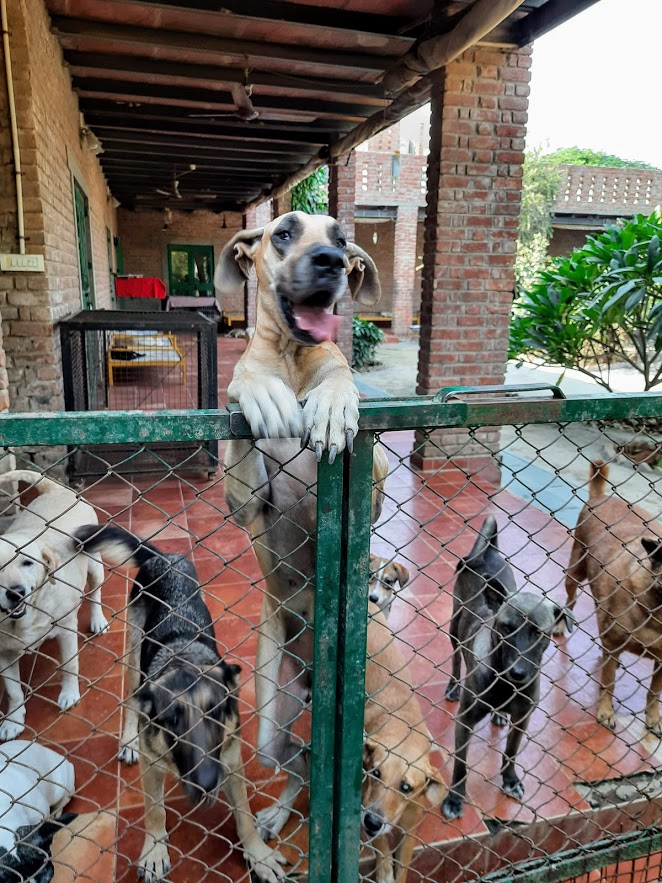
The whole “mad” experiment started in 2012 when Gopalan came across an animal shelter in the capital and was appalled at the state of the animals it housed. The animals were scrawny, ill and uncared for, and the facility was doing more of a disservice to the animals than acting as any kind of haven.
That’s when Gopalan decided to set up what became ACGS, although she had her hands full with the Naz Foundation and her shelter home for HIV-infected individuals.
She managed to buy 2.5 acres of land in Faridabad and decided to house any dogs who couldn’t survive outside due to old age, illness or injury. She began with 55 of them, rescued from the animal shelter she had come across. The facility now has 460 dogs in three large spaces.
As time went on, many large animals were directed to the shelter. Gopalan and her team cared for animals and made space for every sort. Any creature that enters is not let out even after healing since their ability to survive takes a hit after the pampering they receive.
Even as we all gather our wits in the only space not overrun by animals, I watch in fascination as Mishti barges her way in through the widest and absurdly high metal gap in a door that separates us from the other dogs. I learn that she refuses to be separated from Gopalan when she visits the centre and is the only animal permitted to enter every enclosure, an unquestioned exalted status. She has only three good legs but is a champion at high jumps. Mishti joined the ACGS family six years ago, when found abandoned in a cardboard carton near a Delhi vet clinic.

Very soon, I note that decibel levels at ACGS are on another plane: a runway may well be quieter. Every once in a way, a blind dog steps on the toes or disrupts the equilibrium of the pack. Yelps and long yowls break out, and you think a war is on. In reality, it’s just a minor disagreement.
There’s an annoying macaw that doesn’t stop squawking that I steadfastly resist strangling many times throughout the day, aware that my host may not appreciate it. I suggest they shift the bird closer to the periphery of the property to ensure they never have any neighbours, let alone complaining ones.
Human empathy takes on a new perspective at ACGS as one meets the 23-odd member staff, five of whom live there and others who have been employed since inception. All animals have their own names, and almost every staffer is intimately involved with the history of what brought each animal there.
More than one of the staffers is from Siliguri, tracking down ACGS on social media and writing to ask for a job. A 23-year-old I meet is studying for the civil services entrance exam next May and can’t think of a better place to be. He finds being surrounded by the animals therapeutic and thrilling. Clearly, decibel levels are irrelevant to the young.
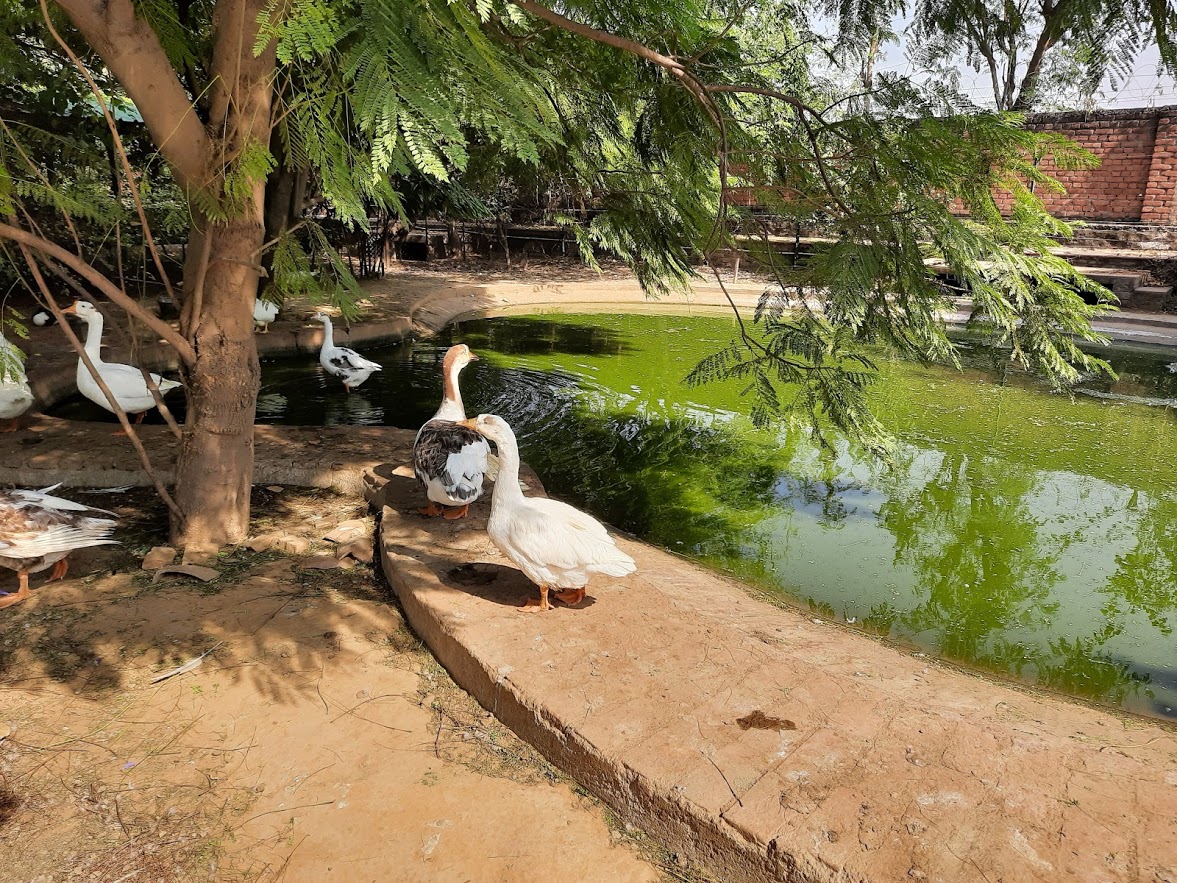
Human cruelty too is at its starkest at ACGS as one learns how some animals found their way there and how many fail to survive the ordeals they faced. A young camel walked without rest, hydration, and nourishment from Jaipur, succumbing within a month of reaching ACGS. Kulhari is a mongrel whose scalp was visible when he came, so badly ruptured it was with a hammer, that the wound took five years to heal.
There were at least 20 goats rescued from imminent slaughter, the most famous of them being Khan Chacha, a mountain goat with his long hair beard and equally long ears. Chiku is the only sheep, rescued from dissection for medical research. The list goes on and on.
After Gopalan has a conversation with the emus that ends in them smooching (yes, you read that right!), we pass Bhim (in his taal) and a bunch of cows, buffaloes, and calves, all basking in the mild winter sun.

We pass the duck pond and turtles to reach the large animals’ enclosure, and my stomach is knotty with fear. Everyone else in the group, however, follows the leader without a care in the world. Bulls with impressive horns, donkeys, horses, a gigantic pig (almost unrecognisable to me on account of how squeaky clean and pink it was) all descend upon us to be loved and petted, blissfully unaware of their girth and human fears. I am terrified, embarrassed to admit it and stick uncomfortably close to Gopalan while trying my best to ward off the approaching…well what now look to me like beasts!
After a long, exhausting day that includes a yummy lunch cooked by the local women who are employed on the premises, we head back to our car to leave well after dark, many reluctant to actually do so.
Around two kilometres from the property, however, we come to a grinding halt to feed 300 chapatis to the stray dogs and monkeys – a daily ritual I learn – in the vicinity of the shelter, animals not fortunate enough to gain entry inside but “who need food regardless”.
Also Read: Rescued From Euthanasia & Abuse, Woman Gives 800+ Animals a Retirement Home!
As I bid goodbye to Gopalan and Co., I find myself saying a silent prayer. Let me, dear God, be born an animal in my next life unable to survive this big, bad world and somehow find my way to the paradise that is ACGS. Only a visit can help you understand why.
To know more about ACGS, get in touch with Anjali Gopalan on 9910308374.
Like this story? Or have something to share?
Write to us: [email protected]
Connect with us on Facebook and Twitter.
This story made me
- 97
- 121
- 89
- 167
Tell Us More
We bring stories straight from the heart of India, to inspire millions and create a wave of impact. Our positive movement is growing bigger everyday, and we would love for you to join it.
Please contribute whatever you can, every little penny helps our team in bringing you more stories that support dreams and spread hope.






